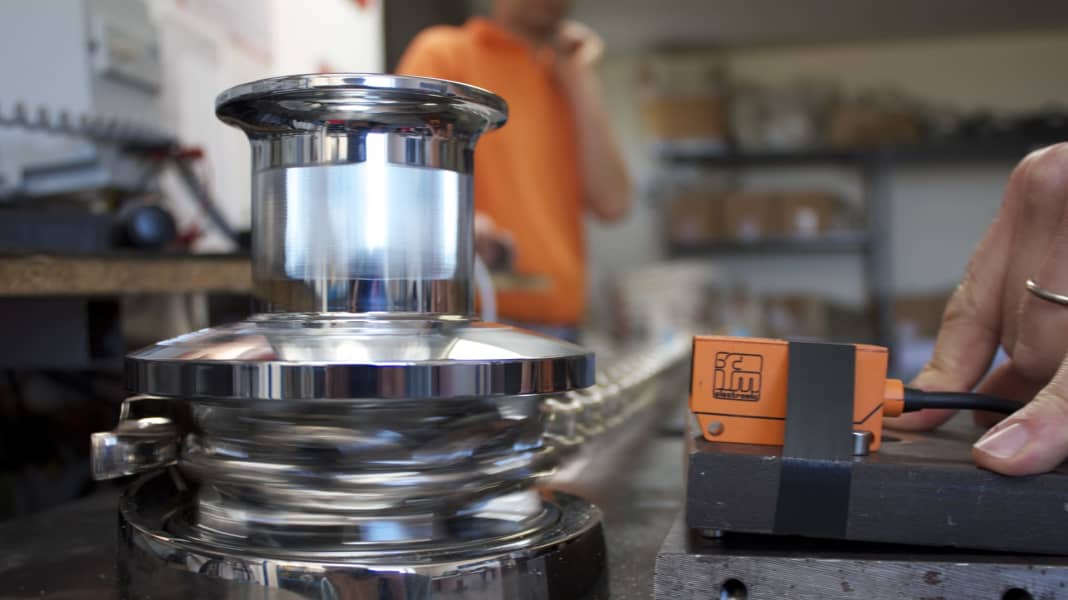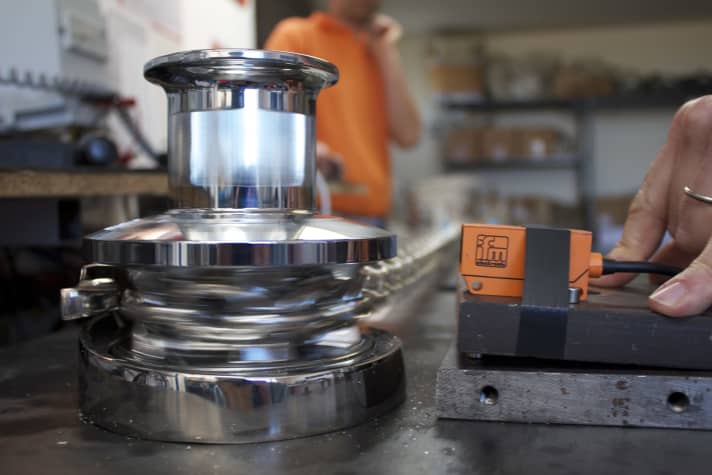

Anchoring is one of the last maritime challenges left to us boaters. While today the autopilot steers, the chart plotter takes care of navigation and the bow thruster supports the mooring manoeuvre, the success of an anchoring manoeuvre still depends entirely on the skipper's seamanship.
The water depth, wind direction, current, subsoil conditions, chain length and the Schwoj circle are just some of the parameters that need to be coordinated before the ground anchor can go down. The same applies, of course, when it's time to raise the anchor. This is when you really realise the weight of the anchor gear. On a 10 metre boat, this can quickly add up to 50 kg or more.
If you want to get the submarine metal parts back on board, you either need a lot of muscle power or active support from an electric anchor winch. At the touch of a button, these power packs raise the anchor and chain from the seabed and transport the latter through the coker back into the chain locker.
The drive is provided by an electric motor that drives the so-called chain sprocket, a type of special gear wheel that grips the individual links of the chain and then transports them further by means of the rotary motion.
The electric motor and chain sprocket are connected by a drive shaft which, depending on the model and manufacturer, may also be fitted with a capstan head for hauling in ropes. Winches owe their basic designations to the spatial arrangement of the shaft (upright or horizontal).
Devices with an upright shaft can be found at the supplier or in the catalogues of consignors under the term "vertical winch". Winches whose drive shafts are positioned transversely in the housing are known as "horizontal winches".
Both types have advantages and disadvantages. For example, the drive unit of a vertical winch is well protected below deck, so that often only a minimalist stainless steel piece is visible on the foredeck. However, anything that is not on deck must find its place below deck on a boat.
Depending on the type and size of the boat, the electric motor and the flange-mounted gearbox of a vertical winch can protrude deep into the forward cabin. This is an unavoidable problem, especially if the yacht's anchor locker is too small to accommodate the drive unit of a vertical winch.
There are no such space problems if you opt for a horizontal winch. In these models, the motor and gearbox are housed in the casing, although the entire size of the casing is on deck. But whether vertical or horizontal - the performance potential of a winch is not visible from the outside.
In order to be able to make more precise statements about the performance of the latest generation of electromechanical anchor assistants, we put nine different winch types of various designs to the test. According to the manufacturers and suppliers, all of them are suitable for a 10 metre motor yacht fitted with an 8 mm anchor chain. Our tests focussed on the following test parameters:
- Maximum power
- Maximum tensile force
- Safe workload
- Maximum workload
- Catch-up speed
What every skipper and, of course, our test team are most interested in is the maximum pulling force of an anchor windlass. In practice, this is the value that is decisive for breaking the anchor out of the bottom. The winch must develop a short-term peak force in order to overcome the holding forces of the anchor in the ground. As our latest anchor tests show, these are constantly increasing due to constantly improving designs (e.g. the Delta anchor and Cobra anchor).
You can find the full test with all measurement results and product information in the current June issue of BOOTE!
